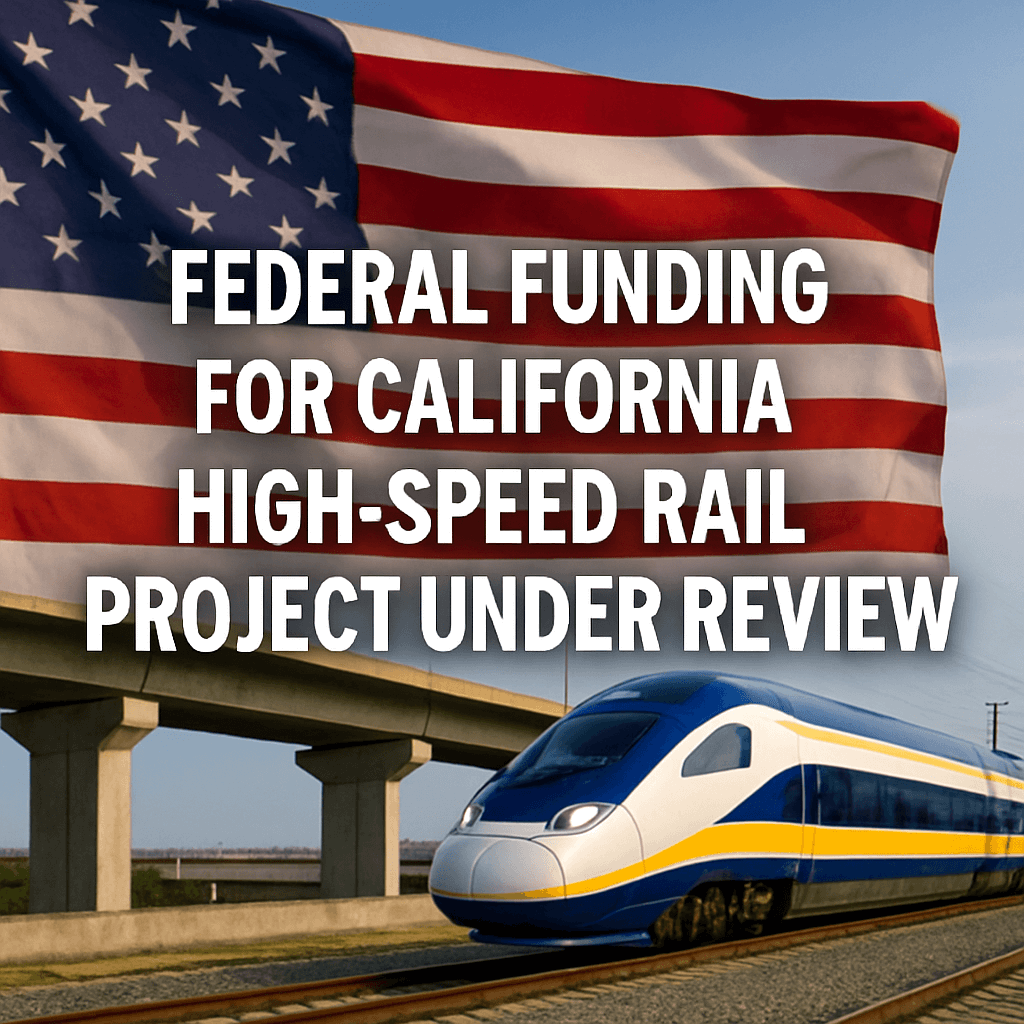Federal Funding for California High-Speed Rail Project Under Review

The Trump administration has indicated that it plans to cut off federal funding for the California high-speed rail project, a venture that has faced significant delays and substantial cost overruns. This announcement follows the release of a federal report criticizing the project and asserting that there is “no viable path” to complete even a partial segment of the high-speed rail line, raising concerns about the project’s future viability.
Background and Initial Funding Challenges
In 2008, California voters approved a significant funding package, authorizing $10 billion in borrowed funds to begin construction on what was originally envisioned as an extensive 800-mile high-speed rail system. The plan aimed to connect key urban centers, including San Francisco and Los Angeles, with travel times under three hours. However, the timeline has continuously shifted, with the original completion target of 2020 now stretched to an anticipated operational date of 2033 for even a partial segment between Bakersfield and Merced.
The cost projections have also spiraled dramatically, from initial estimates of around $40 billion to current forecasts exceeding $100 billion. This financial burden has led many, including officials from the Federal Railroad Administration (FRA), to question the feasibility of the project, especially as it stands at a mere 119 miles of completed track.
Recent Developments and Federal Government Concerns
In a letter addressed to the California High-Speed Rail Authority, the FRA’s acting Administrator Drew Feeley stated that the federal investment, which totals approximately $4 billion, has not produced a substantial return for taxpayers. In his correspondence, Feeley criticized state officials for failing to present a coherent plan to complete even the initial route on schedule, branding the venture a “119-mile track to nowhere.” This statement reflects a growing impatience with the high-speed rail’s perpetual delays and ballooning costs.
State officials, however, have pushed back against these claims. Carol Dahmen, chief of strategic communications for the California High-Speed Rail Authority, defended the project, contending that the federal assessment does not accurately reflect the progress made thus far. She highlighted that the majority of funding has come from state sources, and Governor Gavin Newsom’s proposed budget includes a commitment of at least $1 billion annually for the next two decades to advance the project.
Political Repercussions and Future Prospects
The announcement from the Trump administration has not gone unnoticed by California’s political leadership. Senators Alex Padilla and Adam Schiff, both Democrats, described the decision as a “devastating” setback for modern transportation in the state. They further suggested that this move was politically motivated, aiming to penalize California’s Democratic leadership for its lack of support for the Republican president.
In light of the potential funding withdrawal, the California High-Speed Rail Authority must respond to the FRA within 30 days to avoid termination of grants. As the state officials consider their options, discussions around alternative funding sources have emerged. Choudri, the Authority’s CEO, emphasized the potential role of private investors in mitigating the funding shortfall, but acknowledged that even with new financing, it could take an additional two decades to complete the line as initially envisioned.
Technical Specifications and Strategic Importance
The California high-speed rail project was initially touted as a technological marvel, designed to utilize advanced train systems capable of reaching speeds of up to 220 mph. This was anticipated to revolutionize transport within the state, reducing congestion on highways and providing eco-friendlier alternatives to air travel. The shift from public to potential private financing arrangements raises questions about the long-term operational structure and the safety standards applicable to the rail system.
Conclusion: A Crossroad for California’s Transportation Future
As the Trump administration reiterates its position to halt future funding, California now stands at a crucial juncture regarding its high-speed rail ambitions. Without a viable path to secure necessary financial resources, the state’s plans for high-speed rail may be further jeopardized, leading to public skepticism about large-scale infrastructure investments going forward.
Ultimately, the fate of this ambitious project will depend not only on financial support but also on the willingness of stakeholders, including state government, financial institutions, and the public, to navigate the complex challenges that lie ahead.
Source: fortune